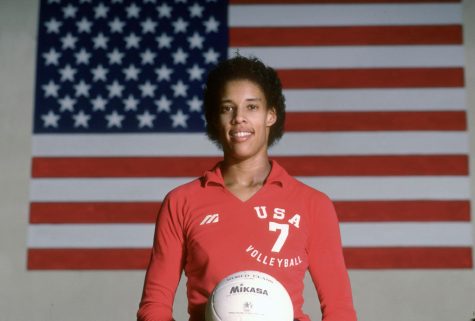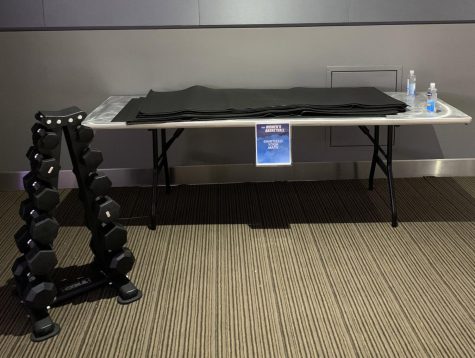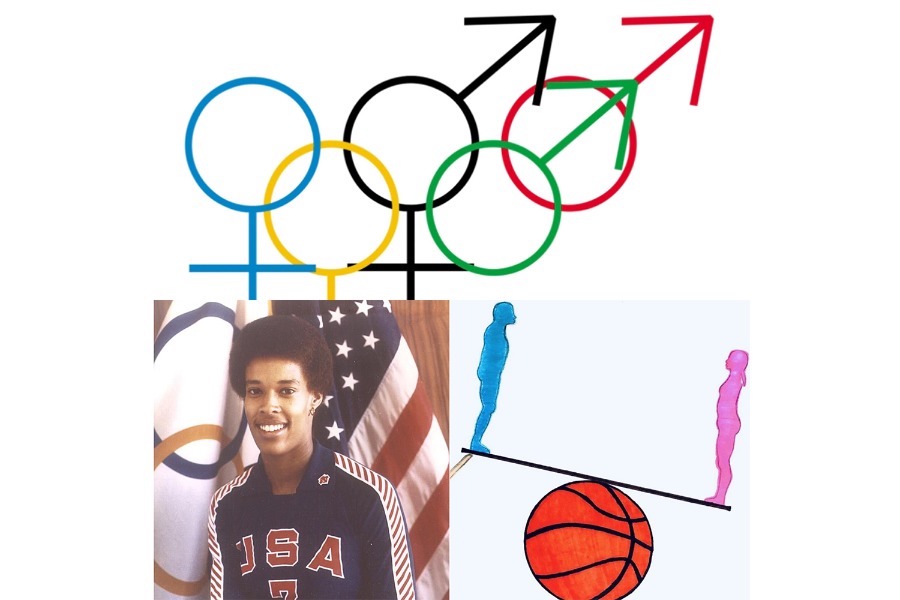Recognizing the impact of National Girls and Women in Sports Day
National Girls and Women in Sports Day prompts reflection and solidarity for female athletes.
The life and legacy of United States (US) National Volleyball player Ms. Flora (Flo) Hyman sparked the creation of National Women and Girls in Sports Day. Ms. Hyman passed away in 1986 at the age of 31 after a fatal aortic dissection due to undiagnosed Marfan syndrome, according to volleyhall.org. Former President Ronald Reagan established the national holiday February 4, 1987 to recognize the contributions female athletes have made to the US and to shed light on the importance of advancing women’s sports, according to reaganlibrary.gov. Senior Justine Hounsell, who will be attending Cornell University in the fall and competing on the women’s track and field team, emphasized the importance of inclusivity and equity in athletics.
Ms. Hyman played for the US National Volleyball team from 1974 to 1984 and earned a silver medal in the 1984 Los Angeles Summer Olympics. She went on to play professional volleyball in Japan for the Daiei team, according to olympics.com. Ms. Hyman is a graduate of the University of Houston, where she was the first female scholarship recipient to play a sport, according to uhcougars.com. In addition to her achievements on the court, she worked to promote equal representation for women and Black Americans in the world of athletics. Ms. Hyman’s accomplishments distinguish her as a trailblazer for the racial integration of volleyball and as an advocate for gender equality.

National Girls and Women in Sports Day acknowledges the achievements of female athletes who have broken barriers and also serves as a day for reflection. It is a day to recognize the gender disparities still present within athletics worldwide, including inequalities in funding and the gender wage gap.
The gender pay gap measures the difference between the average earnings of women and men in the workforce, according to wgea.gov.au. Across workplaces, fields, and arenas in the US, women receive unequal treatment for the same work as their male counterparts.
During the 2021 March Madness Division I Basketball Tournament, Ms. Sedona Prince, a basketball player for the University of Oregon, exposed the discrepancies between the men’s teams and the women’s teams on social media. She highlighted the differences in the weights and the practice spaces of both teams, according to The Los Angeles Times.
Ms. Alexandra Kershner, a strength and conditioning coach for Stanford University, saw the social media post that Ms. Prince created. In a similar Instagram post, Ms. Kershner addressed the National Collegiate Athletic Association (NCAA) and shared her perspective on the disparity.

“In a year defined by a fight for equality this is a chance to have a conversation and get better,” Ms. Kershner said, according to instagram.com.
Senior Justine Hounsell, who will further her athletic and academic careers at Cornell University in the fall, made note of gender-based discrimination in athletics. Justine will join the Cornell women’s track and field team, contributing to the 2.7 percent of high school girls who pursue track and field at the collegiate level, according to ncsasports.org. She believes that the biases that female athletes have faced in the past continue to have detrimental effects on the way the public perceives women in athletics today.
“In the past, female athletes were not allowed to compete in certain events or run certain distances because male authority figures did not think they had the capabilities to compete at such high levels. Many people think this because female runners do not have the testosterone to run as fast as male runners,” Justine said. “As someone who often trains alongside male athletes, it can be discouraging and disheartening to not have the same strength and speed.”
Featured Image by Libby Kaseta ’22

Libby is ecstatic to be back in the Newsroom for another engaging school year. She cannot wait to share her passion for journalism with the staff writers...


